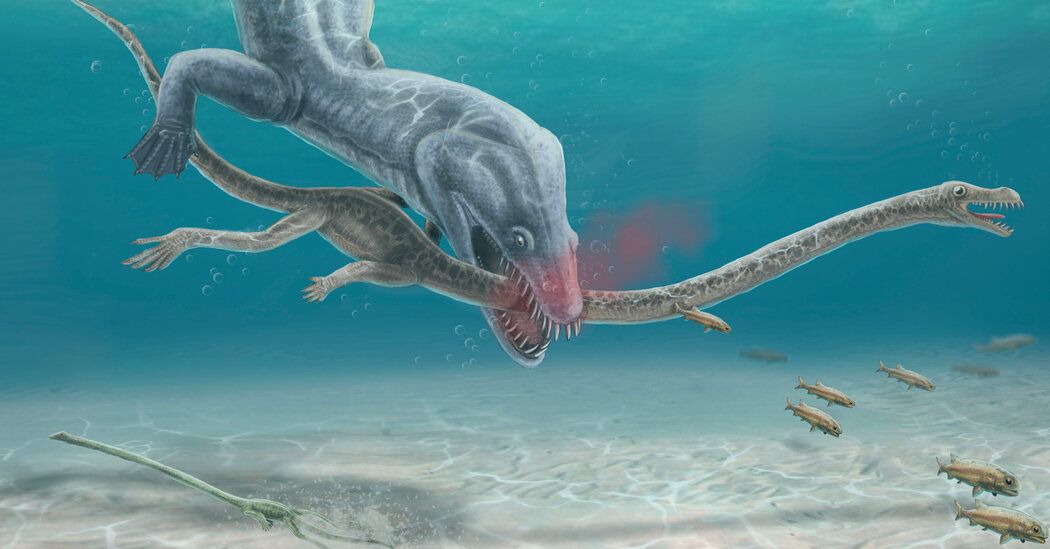Fossils Show How Long-Necked Reptiles Lost Their Heads
In 1830, Henry De la Beche, an English paleontologist, composed a painting of “Duria Antiquior,” a vision of Mesozoic oceans. When picturing a long-necked marine reptile, he depicted its throat clamped between the jaws of a monstrous Ichthyosaurus.
Almost two centuries have passed without direct evidence of the neck biting De la Beche imagined. But research published Monday in the journal Current Biology has provided gory — and extremely rare — evidence that predators saw the lengthy, outstretched necks of reptiles swimming around prehistoric seas as an irresistible target.
The victim was Tanystropheus, whose neck is “completely unique” in the fossil record, said Stephan Spiekman, a paleontologist with the State Museum of Natural History in Stuttgart, Germany, and an author on the study. The structure — which made up half the animal’s body — was constructed from 13 bizarrely elongated and interlocking vertebrae, creating a neck as stiff as a fishing rod.
“Getting any insight into how these extreme structures functioned with potential weakness and strengths is very important,” Dr. Spiekman said.
Source: The New York Times


